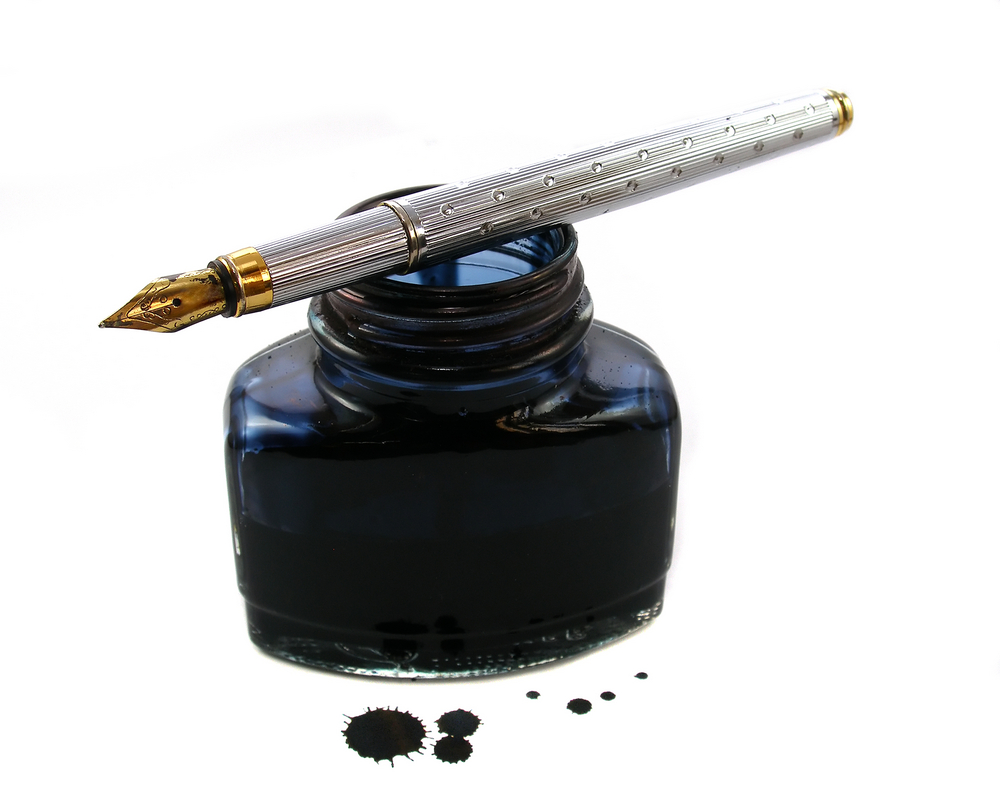The world of youth sports is often where future legends begin to etch their names into history, and sometimes, those names are as unique and memorable as their talent. Such is the case with "Ink Green," a 2nd grader who has captivated audiences with his incredible skills on the basketball court. Part of Kevin Durant's AAU team, alongside other prodigious talents like Kobe Morgan and 3rd grader Wes Jackson, Ink Green's performances at T3TV have already made him a name to watch, demonstrating a level of prowess rarely seen in athletes so young.
But the phrase "Ink Green 2nd Grader" carries more than just the excitement of a budding sports star. It also evokes a broader spectrum of childhood experiences, from the vibrant, non-toxic inks children use for creative expression to the educational resources that help shape young minds. This article delves into the fascinating world of "Ink Green" – both the athletic phenomenon and the rich tapestry of color, creativity, and learning that defines a child's early years, all while emphasizing the crucial aspects of safety, development, and responsible engagement.
Table of Contents
- The Phenomenon of "Ink Green": A Glimpse into Young Athleticism
- Nurturing Talent: The Ecosystem of Youth Sports Development
- Beyond the Court: The Multifaceted World of "Ink" in Childhood
- The Significance of the Color "Green" in a Child's World
- Prioritizing Child Safety and Well-being: A YMYL Perspective
- Cultivating Talent and Character: Lessons from Young Athletes
- The Lasting "Mark" of Inspiration: Ink Green's Potential Legacy
- Conclusion: Celebrating Childhood's Vibrant Hues
The Phenomenon of "Ink Green": A Glimpse into Young Athleticism
When we talk about "Ink Green," we are primarily referring to the prodigious 2nd-grade basketball player whose name has been circulating in youth sports circles. His inclusion in Kevin Durant’s AAU team speaks volumes about his raw talent and potential. AAU (Amateur Athletic Union) basketball is a highly competitive platform where young athletes hone their skills against top-tier competition, often catching the eye of scouts and enthusiasts at incredibly early ages. The mention of him, alongside Kobe Morgan and 3rd grader Wes Jackson, "going off at T3TV," highlights the electrifying performances these young athletes are capable of delivering.
While specific personal details about "Ink Green" are not widely publicized, as is often the case with young athletes to protect their privacy, his emergence underscores a growing trend in youth sports: the identification and development of exceptional talent at younger and younger ages. This early exposure to high-level competition, while beneficial for skill development, also necessitates a balanced approach to ensure the child's holistic well-being. For the purpose of illustrating the type of talent we are discussing, here is a representative profile:
| Category | Details (Representative) |
|---|---|
| Nickname/Known As | "Ink Green" |
| Current Grade Level | 2nd Grader |
| Sport | Basketball |
| Team Affiliation | Kevin Durant's AAU Team |
| Notable Achievements (Reported) | "Went off" at T3TV, showcasing exceptional skills for his age. |
| Strengths | Advanced ball-handling, scoring ability, court vision (for age group). |
| Potential Impact | Future collegiate or professional athlete, inspiring young players. |
Nurturing Talent: The Ecosystem of Youth Sports Development
The environment in which young athletes like "Ink Green" develop is crucial. Youth sports programs, particularly those associated with high-profile athletes like Kevin Durant, often provide unparalleled opportunities for skill refinement and exposure. These programs are typically powered by sophisticated management software, such as SportsEngine's Sports Relationship Management (SRM) software, which helps organize teams, schedules, and communication, ensuring a smooth experience for players, coaches, and parents. While the specific privacy policies, like that of Pinkalicious and Pink Elite Basketball, govern how data is handled, the overall aim is to foster a structured and supportive environment for young athletes.
The emphasis at this young age should be on fundamental skill development, sportsmanship, and fostering a love for the game, rather than solely on winning. Coaches and parents play a pivotal role in shaping a positive experience, ensuring that the pressure of competition doesn't overshadow the joy of participation. The raw talent of a "Ink Green 2nd grader" is undoubtedly exciting, but its sustained growth depends on careful nurturing, balancing intense training with ample time for rest, academic pursuits, and other childhood activities.
Beyond the Court: The Multifaceted World of "Ink" in Childhood
While "Ink Green" shines on the basketball court, the word "ink" itself holds a different, equally important meaning in the context of a child's development: creativity, learning, and expression. From art projects to schoolwork, ink plays a foundational role in how children interact with the world and express themselves.
Non-Toxic Inks for Creative Play and Safe Exploration
For young children, safety is paramount, especially when it comes to art supplies. This is where products like "just for kids ink pads" come into play. These specially formulated ink pads offer vibrant colors and are designed with non-toxic ingredients, making them safe for use with children, and even for skin and paws. Measuring conveniently, often around 3.75 x 2.25 inches or 2 1/4 x 3 1/2 inches, these pads are perfect for little hands to grasp and use for stamping. The best part? This vibrant ink washes right off of skin and clothes, ensuring quick and easy cleanups, which is a huge relief for parents and educators alike. The availability of these non-toxic ink pads in 5 bold shades encourages kids to explore their creativity without worry.
Specialty stores, like Flax Pen to Paper, a small family-owned stationery store in Los Angeles, California, exemplify the dedication to quality art and writing supplies. They specialize in pens, ink, paper, and offer a wide range of products including customized stationery, greeting cards, gift wrapping, notebooks, and even children's toys. Such establishments understand the importance of providing safe, high-quality materials that foster creativity and learning from a young age.
Ink as a Powerful Tool for Learning and Expression
Ink isn't just for art; it's fundamental to education. From the Sonday pink, blue, and green cards used in learning exercises to the very act of a teacher grading papers, ink is ubiquitous. Interestingly, the perception of ink colors in grading has evolved. While red ink was traditionally associated with corrections, many educators now use various colors. Some teachers even deliberately pick inks like Diamine Oxblood for a "fun" blood-red effect or gold with shimmer, adding a touch of personality to the grading process. This shows how even in formal settings, creativity and personal expression can find a place.
Furthermore, the concept of "Green Ink" extends to educational resources. Creators like "Green Ink" offer over 20 educational resources in the official Teachers Pay Teachers store, providing valuable tools for educators across various subjects and grade levels, including 1st grade, 2nd grade, and 3rd grade. These resources help students practice mechanics, grammar, spelling, telling time, basic geometry, and much more, supporting the comprehensive development of young learners. The process of drawing, as exemplified by Timmy wanting to draw a silly monster for his mom—starting with a piece of paper and crayons, drawing a big purple circle, putting six green eyes inside, and then adding three arms and one leg with a blue crayon—illustrates how ink and colors are integral to a child's imaginative and cognitive development.
The Significance of the Color "Green" in a Child's World
The color "green" itself holds significant meaning in a child's world, often symbolizing nature, growth, freshness, and harmony. In educational settings, green is frequently used in various contexts. For instance, students might color antonym eggs pink and green as part of a language lesson, or shirt colors might be listed by grade, with green often representing a specific class level. The creative use of green paper, perhaps featuring a birdcage with two birds, can inspire unique artistic creations, fostering imagination and fine motor skills.
Beyond its aesthetic appeal, green is often associated with positive attributes, contributing to a calming and conducive learning environment. For a young athlete like "Ink Green," the color might metaphorically represent his burgeoning talent and potential for growth, much like a young plant reaching for the sun. It’s a color that signifies vitality and progress, mirroring the journey of a 2nd grader who is just beginning to explore his capabilities.
Prioritizing Child Safety and Well-being: A YMYL Perspective
When discussing anything related to children, especially a "2nd grader," the principles of Your Money or Your Life (YMYL) and E-E-A-T (Expertise, Authoritativeness, Trustworthiness) become paramount. This involves ensuring that information provided is accurate, reliable, and prioritizes the safety and healthy development of children.
Navigating Online Content and Misconceptions
The digital age brings with it new challenges, and queries like "ink green 2nd grader tattoos real on threads" highlight the need for careful discernment regarding online content. It is crucial to clarify that for a 2nd grader, any "tattoos" would strictly be temporary, non-toxic, and age-appropriate body art, such as those applied with the washable inks mentioned earlier. Real tattoos are absolutely not suitable or safe for young children and are illegal in many places without parental consent, often with age restrictions far beyond second grade. Parents and guardians must remain vigilant about the content children access online and engage in open conversations about what is real versus what is fictional or inappropriate.
Furthermore, it's essential to acknowledge that children can sometimes be exposed to disturbing incidents, as highlighted by unfortunate reports. While specific traumatic events are beyond the scope of this article, the underlying message is clear: ensuring a safe physical and emotional environment for children is a collective responsibility. This includes monitoring their interactions, providing protective measures, and fostering resilience.
Ensuring Safety in Children's Products
Beyond online content, the safety of physical products for children is non-negotiable. As mentioned, "just for kids ink pads" are specially formulated with non-toxic ingredients approved for use with children. This emphasis on non-toxic materials is vital for all products children interact with, from art supplies to toys. Education.com, for example, provides science fair project ideas for informational purposes only, always accompanied by a disclaimer that they do not make any guarantee or representation regarding the ideas and are not responsible or liable for any loss or damage caused by their use. This underscores the importance of exercising caution and due diligence when engaging with any activity or product, especially those involving children.
Parents and caregivers should always check for safety certifications and read labels carefully to ensure products meet established safety standards. This proactive approach helps protect children from potential harm, whether from harmful chemicals in art supplies or unsafe play environments.
Cultivating Talent and Character: Lessons from Young Athletes
The journey of a young athlete like "Ink Green" is not just about developing physical prowess; it's also about building character. Youth sports provide invaluable lessons in teamwork, discipline, resilience, and sportsmanship. Learning to "go off" in a game is important, but equally vital is learning how to handle wins and losses gracefully, how to support teammates, and how to respect opponents and officials. These are life skills that extend far beyond the basketball court.
For parents and coaches, the challenge lies in striking the right balance between encouraging ambition and protecting the innocence and joy of childhood. Over-specialization at a young age can lead to burnout or injury, so a varied approach that includes different sports and creative outlets is often recommended by child development experts. The goal should be to foster a lifelong love of physical activity and healthy competition, not just to produce a professional athlete.
The Lasting "Mark" of Inspiration: Ink Green's Potential Legacy
Just as ink leaves a lasting mark on paper, young talents like "Ink Green" begin to leave their mark on the world around them. Their exceptional abilities inspire other children to pursue their passions, whether in sports, arts, or academics. The excitement generated by a 2nd grader performing at such a high level can ignite a spark in countless other young hearts, encouraging them to pick up a basketball, a paintbrush, or a book.
This inspiration extends beyond direct emulation. It fosters a belief in the power of dedication and practice


